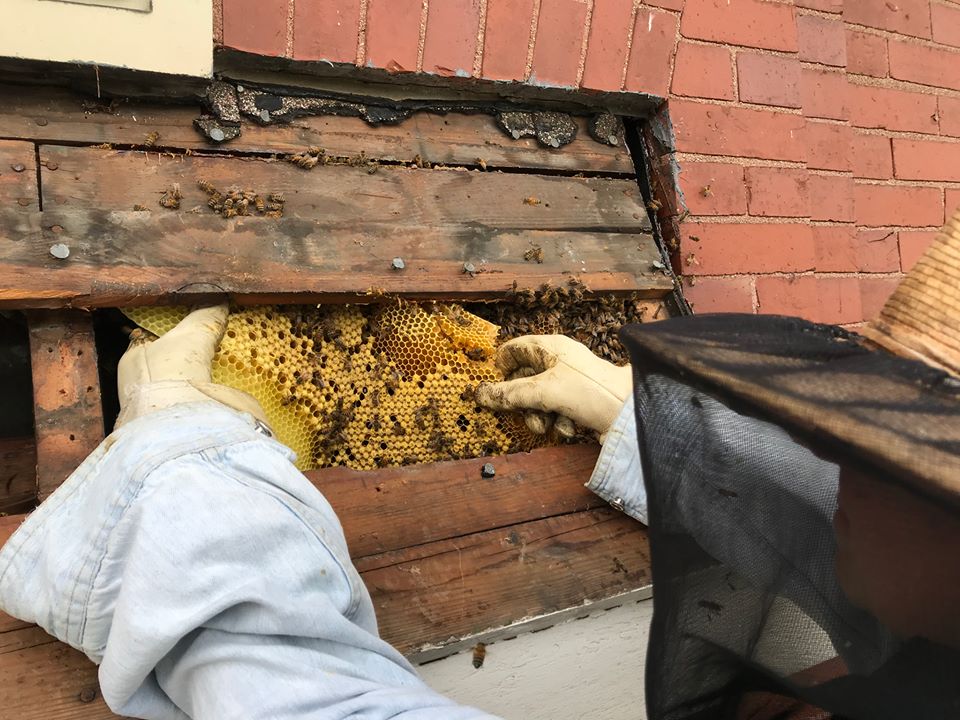Sometimes, bees will scout out a promising new hive location in the hollow of a tree and move into it…which is awesome. But sometimes they decide to live in a nice, warm, dry, protected spot in your home, and that’s a problem. Lucky you. :)
Even those of us who love honeybees don’t want to indefinitely share our homes with them.
If you live in the Greater Cincinnati area and have what you believe is a colony of honeybees sharing your home with you, contact TwoHoneys Bee Co. Lucky for you, we are awesome at removing honeybees! We’ll ask you to take a few picture of the situation and send those images electronically to us. That way, we can determine that the bees are indeed honeybees. Your pictures also help us get an idea of the landscape in which we’ll work to remove the colony.
Based on the images you send, and after visiting your home to further assess the situation, we’ll offer a proposal for our work.
What Bee Removal Entails
Every bee-removal job is unique, but in order to completely expose the hive, almost all removals involve deconstructing part of the structure where the bees live. The extent of deconstruction depends completely on the size and the location of the colony.
Once we expose the hive, we methodically remove the bees and the honeycomb (in which the colony raises brood and stores pollen and honey). We generally remove the comb one section at a time, securing the comb in wooden frames as we go, and place the frames (and the attending bees) directly into a wooden box that will become the bees’ new home.
When the honeycomb and the brood it contains is relocated, the bees generally follow. Sometimes we’ll need to vacuum those bees that stubbornly return to the old location, but once the comb is gone and the cavity cleaned and the void space is filled with fiberglass insulation, the bees are usually content to follow the hive…especially if we successfully capture the queen. When we capture the queen, the other bees simply and literally march to her. It’s an awesome sight.
In order to collect those bees that were foraging at the time of the removal, we’ll leave the wooden hive boxes set up as near as possible to the entrance of the old location. At dusk or at dark, once all the foraging bees have returned and settled in to their new home, we’ll completely close the new hive and move it to one of our beeyards or into the care of one of our bee stewards; there, we’ll feed and care for the newly relocated hive until it recovers from the move.
It’s virtually impossible to collect every single bee, and for a few days after the colony is removed, homeowners can expect a collection of bees to congregate at the site of their previous home. If the number of bees is large, we’ll return to vacuum the stragglers. The cluster will diminish over the course of a few days, however, as the bees drift off to join other colonies.
We make every attempt to keep the bees calm and the transition from your home to our box peaceful.

